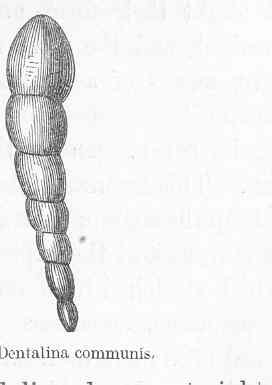Related Research Articles

The Fusulinida is an extinct order within the Foraminifera in which the tests are traditionally considered to have been composed of microgranular calcite. Like all forams, they were single-celled organisms. In advanced forms the test wall was differentiated into two or more layers. Loeblich and Tappan, 1988, gives a range from the Lower Silurian to the Upper Permian, with the fusulinid foraminifera going extinct with the Permian–Triassic extinction event. While the latter is true, a more supported projected timespan is from the Mid-Carboniferous period.

The Rotaliida are an order of Foraminifera, characterized by multilocular tests (shells) composed of bilamellar perforate hyaline lamellar calcite that may be optically radial or granular.
Carterina is a genus in the family Trochamminidae, composing its own subfamily Carterininae. The genus is described from specimens gathered during the Challenger expedition's circumnavigation of the Earth from 1872-1876.
Hantkeninoidea is a superfamily of foraminifera with planispiral or enrolled biserial tests, found in marine sediments of Paleocene to Miocene age, in which chambers vary from globular to elongate and the primary aperture is equatorial in position. It contains one family, the Hantkeninidae.
The Moravamminacea is a superfamily of foraminifera within Fusulinida that comprises genera in which the proloculus is followed by a coiled or straight second chamber, and in which periods of growth result in partial or incipient septa. Contains three families, Caligellidae, Moravamminidae, and Paratickenellidae, with an overall range from the upper Silurian to the Lower Carboniferous (Mississippian).
The Nodosinellacea is a superfamily of fusulinids in which the test is of one or more distinct chambers with the wall single layered or with a microgranular outer layer and fibrous inner layer. Differs from the Geinitzinacea in that the latter has the layers reversed.
The Fusulinacea is a superfamily in the Fusulinida in which the test is spherical, discoida, or fusiform; commonly coiled, less often uncoiling in the late stage, numerous chambers per whorl; test wall of microgranular calcite in one to four layers. Tunnels or secondary foramina may result from partial resorption and secondary deposition may produce chomata, parachomate, tectoria, and axial fillings. Range: M Devonian (Givetian) – U Permian

Lagenida is an order of benthic foraminiferal protists in which the tests (shells) are monolamellar, with walls composed of optically and ultra-structurally radiate calcite, with the crystallographic c-axes perpendicular to the surface. Lagenids first appear in the Upper Silurian and continue to the Recent. They are currently divided into two superfamilies, the older Robuloidacea which range from the Upper Silurian to the Lower Cretaceous (Albian) and the younger Nodosariacea, ranging from the Permian to Recent.
Robuloidacea is a superfamily included in the Protista order Lagenida in which the test wall is either not secondarily lamellar or is only slightly so, as in later taxa.
Nodosariacea is one of two superfamilies making up the foraminiferal order Lagenida. The other being the Robuloidacea. Of these two Nodosariacea is the more advanced, as well as being the younger.
Parathuramminacea comprises a superfamily within the foraminiferal order Fusulinida, characterized by tests (shells) that are unilocular, globular to elongate or irregular, or that may consist of a series or cluster of such chambers. Forms are either free or attached.
Involutinida is an order of foraminifera included in the Spirillinata found in the fossil record from the early Permian to early Late Cretaceous (Cenomanian).
The Rzehakinidae is a family of Lower Cretaceous to recent formaminifera that resemble the calcareous imperforate Miliolidae but which are constructed of finely agglutinated material that veneers an organic base. Tests are with two, or less commonly three, chambers per whorl, which are commonly added in various planes. In form they are generally ovoid.

Cibicides is a genus of cosmopolitan benthic foraminifera known from at least as far back as the Paleocene that extends down to the present.
The Hormosinacea is a superfamily of agglutinated foraminifera in the Textulariida, with a range that extends from the Middle Ordovician, that unites seven families characterized by multilocular tests,, in a uniserial arrangement.
Sigmoilina is a miliolid genus, referring to the foraminiferal order Miliolida, characterized by an assymmetricall biconvex test formed by strongly overlapping chambers, one-half coil in length, that form a sigmoid (S-shaped) curve in cross section. The strongly overlapping chambers obliterate earlier ones from view resulting in the compressed biloculine appearance, differing from the squat, depressed biloculine form of Pyrgo and Biloculina. The test, as for all Miliolida, is porcelaneous and imperphorate, the terminal aperture, with tooth, the only point of egress and ingress for the animal.

Fischerinidae is a foraminiferal family now in the miliolid superfamily Cornuspiracea that comprises genera that can be free or attached, in which the proloculus is followed by an undivided tubular or spreading second chamber. Commonly, especially in free, i.e. unattached, forms the second chamber is looped around in coils. As diagnostic for the Miliolida the test wall is of imperphorate porcelaneous calcite. The aperture, which is the avenue of egress and ingress for the protoplasm, is terminal; can be rounded or slitlike.

Helen Niña Tappan Loeblich was an American micropaleontologist who was a professor of geology at the University of California, Los Angeles, a United States Geological Survey (USGS) biostratigrapher, and a scientific illustrator whose micropaleontology specialty was research on Cretaceous foraminifera.
Alfred R. Loeblich Jr (1914–1994) was an American micropaleontologist. He was married to Helen Niña Tappan Loeblich and the two co-authored a number of important works on the Foraminifera and related organisms.

Spirocyclinidae is a family of foraminifera included in the order Loftusiida.
References
- 1 2 3 4 Alfred R. Loeblich Jr and Helen Tappan 1988. Foraminiferal Genera and their Classification. VanNostrand Reinhold. New York N.Y. On line at "GSI.ir - - Paleontology -". Archived from the original on 2012-06-16. Retrieved 2012-09-26.
- 1 2 Loeblich, Alfred R.; Tappan, Helen (1964). Moore, R.C. (ed.). Protista 2: Sarcodina Chiefly "Thecamoebians" and Foraminiferida. Treatise on Invertebrate Paleontology. Vol. C (5th ed.). Geological Society of America. ISBN 978-0-8137-3003-5.